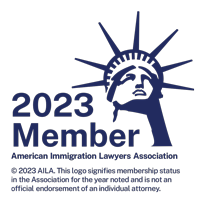International travel is typically a fairly simple process for U.S. citizens, as it often only requires a valid U.S. passport and a standard screening process when entering new countries. However, the process is more complicated for permanent residents and non-citizens who reside in the U.S.
U.S. Citizenship and Immigration Services states that permanent residents are free to travel outside the United States at any time. However, there are a few restrictions and requirements in place for permanent residents to both leave the country and to return to the country with their residence status intact.
Travel Checklist for Permanent Residents and International Students
If you’re a permanent resident and want to travel outside the U.S. this summer, be sure to follow these tips to make the trip go as smoothly as possible:
✓ Present your passport or travel documents when entering new countries
As a permanent resident, you will not have a U.S. passport. However, passports from your country of citizenship are valid when entering other nations. Refugee travel documents are also accepted. In addition, some countries in South America, Africa, and Europe require additional visa documents before entry.
✓ Present your residency documents when re-entering the U.S.
Just as it’s important to have the proper documents when you enter other countries, you also need proper documentation to re-enter the U.S. You’ll need include a valid, unexpired Permanent Resident Card (green card). U.S. Customs and Border Protection officers also may review documents like your passport, foreign national I.D. card, or U.S. driver’s license.
✓ Apply for a Reentry Permit If Your Trip Will Last Longer than 1 Year
Permanent residents who leave the U.S. and remain abroad for more than one year may be found to have abandoned their permanent residence status. To avoid this, be sure to apply for a reentry permit on Form I-131 before you depart the U.S. If your trip will last longer than two years, your re-entry permit will expire, and you will have to applying for a returning resident visa (SB-1) at a U.S. Embassy or Consulate. It’s also important to note that leaving the country for more than six months can make it more difficult to become a naturalized citizen.
If you’re an international F-1 student seeking to leave the country for travel purposes, make sure you have these documents on hand to present at your port of entry:
● A completed I-20 form
● A valid passport
● A valid F-1 visa stamp
● Original financial documentation
● Copy of academic transcript
When you pass through a port of entry, the immigration inspector will ask to see your I-20 Form and passport with F-1 visa stamp. He or she also may ask to see the other documents listed above.
Need Additional Travel Information? Call Knoxville’s Immigration Attorneys.
At Jennings Immigration Law Office, we know that many immigrants, permanent residents, and international students are concerned about both their ability to remain in, leave, and return to the U.S.

